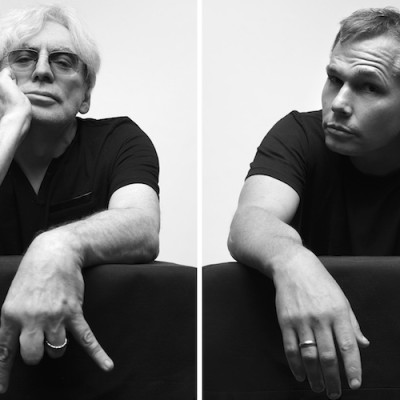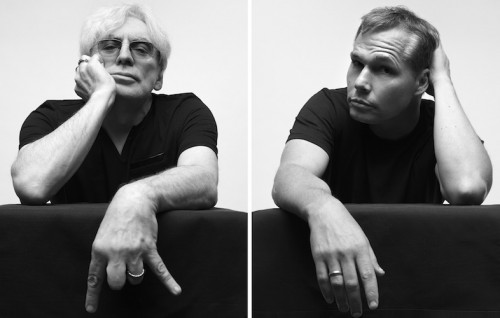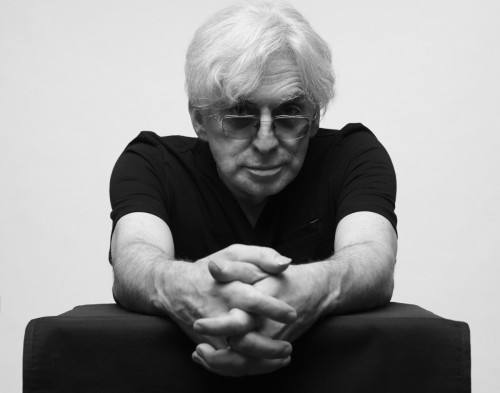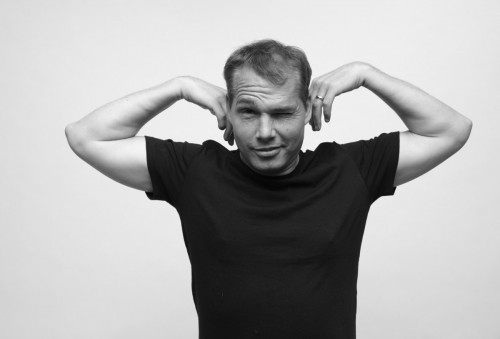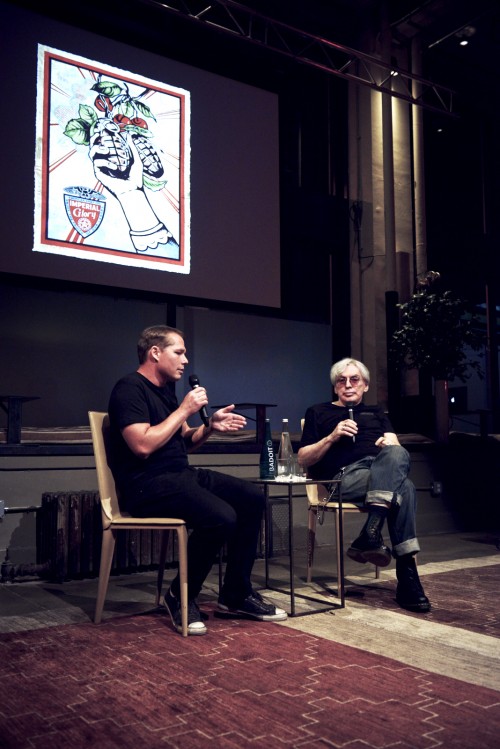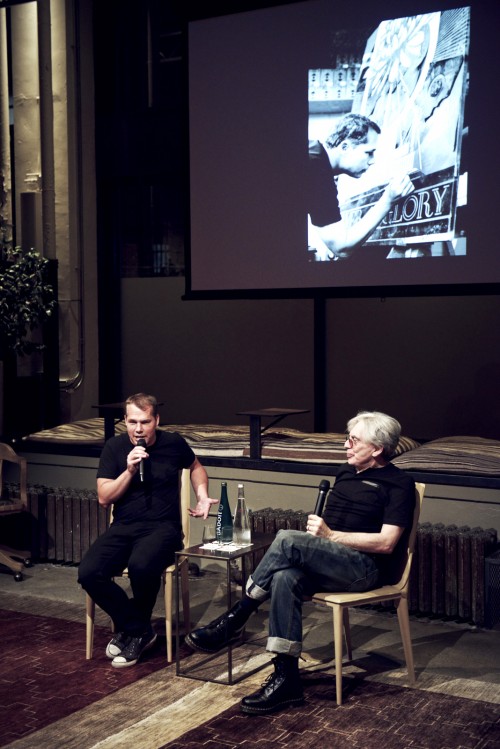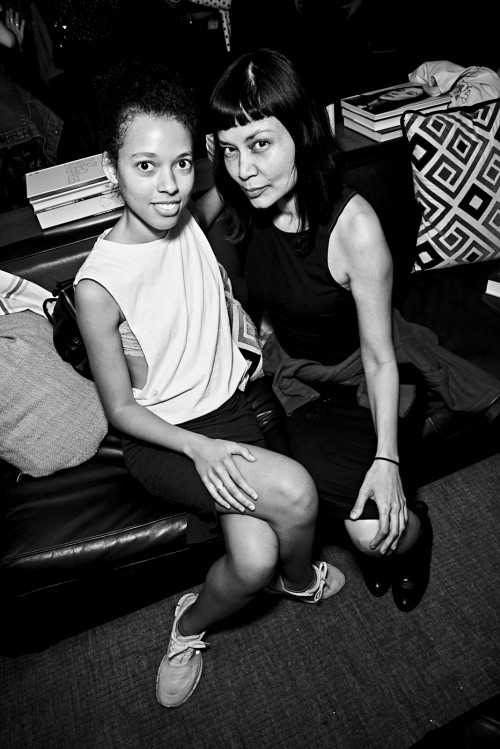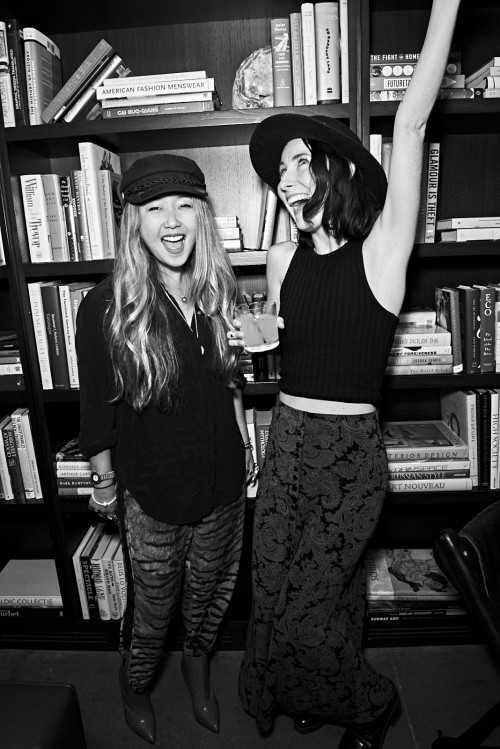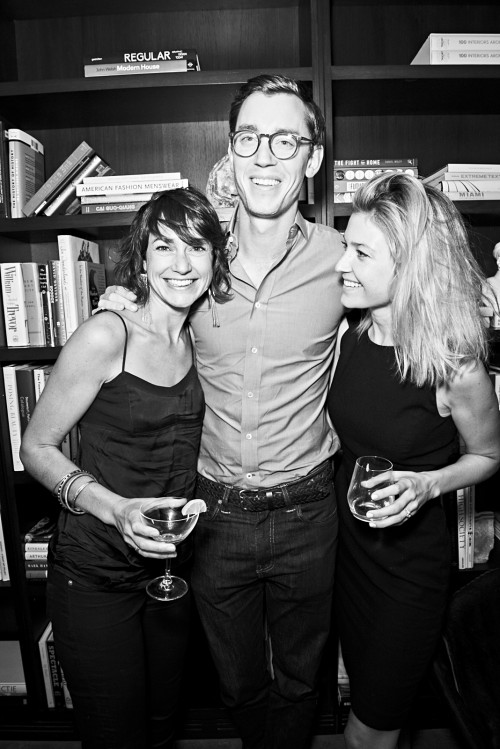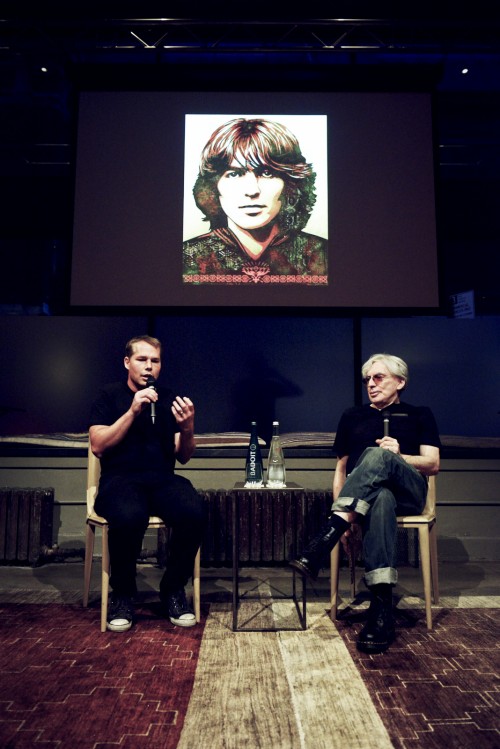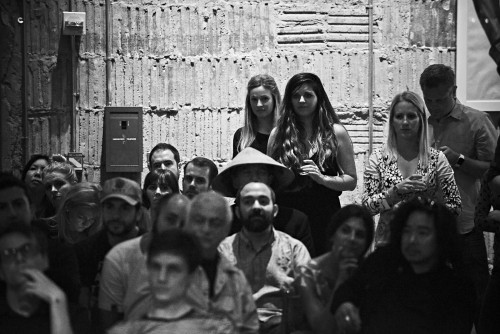While Shepard was in New York last week for the opening of his show “On Our Hands” at Jacob Lewis Gallery, he sat down with Blondie co-founder Chris Stein at NeueHouse New York to discuss their common interests in art, culture, and music. Check out the condensed transcript below courtesy of NeueJournal.
SHEPARD FAIREY & CHRIS STEIN
COMMON INTERESTS & EXPERTISE
SEPTEMBER 24, 2015
In Conversation with Shepard Fairey & Chris Stein
Shepard Fairey is an artist/activist most known for designing the famed HOPE poster during Barack Obama’s first presidential campaign. Chris Stein is the co-founder and guitarist of the legendary new wave band, Blondie. The two men are artists of different mediums, cultural personalities of distinct generations, and yet, Fairey and Stein are kindred spirits. They share a nostalgia and reverence the foundational moments of punk, but also self-awarely shy away from romanticization. They are renown for their work, but are also valuable authorities on their specific subcultural obsessions. Fairey and Stein spoke in conversation at NeueHouse Madison Square, and with their common interests and expertise, they had much to discuss.
Shepard Fairey: I know this is supposed to be you interviewing me, but I’m also going to interview you. I’m very jealous — although I’m happy, and I’m younger — but I’m still jealous that I wasn’t in New York for a lot of the things that I think were so amazing: The emergence of graffiti, for example, and I know you and Debbie were early supporters of Basquiat. Between your influences, from the Velvet Underground to Phil Spektor, were you just omnivorous in your inspiration or were there specific things that you thought were the ingredients to making great art.
Chris Stein: I don’t know if a lot of planning of pre thought went into it. It was just what we liked and were exposed to. The Blondie formula was a lot of B movies, girl groups, garage rock and our peers. It was very incestuous, so everyone was feeding off each other.
SF: Who were you having the most direct contact within the scene? I know you ended up playing with the Ramones.
CS: The Ramones were good friends, and the guys from Television to a slightly lesser extent. They were kind of in the art crowd and we were in the pop crowd.
SF: Did you study photography because you felt that that was a more practical route than music?
CS: No, I went into fine art but that was at the height of conceptualism with Alex Hay and Joseph Kosuth, and I found that stuff really dry. I found that I was much more of a romantic, and I drifted into photography.
SF: Well, I guess the music thing worked out. I know the New York Dolls were a big inspiration, but you also liked Bowie and T-rex. That was kind of the most exciting thing happening at the time, right? Glam rock?
CS: Yeah, we saw the final death throws of glam rock when we went to L.A. for the first time. But we were very much in the moment. There was no thought process behind what we were doing. We were just doing what we liked and that’s it. There was no planning or scheming about image.
SF: I think there’s a lot to be said for being versed in “high-culture” and “low-culture.” You guys were fans of art, music and fashion, and when you’re living on low rent, you have to do all of that very creatively. So, my impression is that you responded intuitively to things that were emerging, but also mixed in the old things that you were inspired by. There was a sort of fearlessness in just going with your gut. All the subcultures that I’ve ever been interested in, whether it was skateboarding, punk rock, hip-hop or graffiti, all started off as if there are no rules. They were a clean slate. Do whatever you want. Be a rule breaker. Then they slowly develop an orthodoxy.
CS: Skateboarding culture was always interesting to me because, when I was a kid growing up, there was this huge split between the hip kids and the jocks, and skating culture became the intermediary of those two extremes.
SF: Yeah, that’s kind of true. My dad was captain of the football team, and my mum was head cheerleader, and my parents pushed me to play football, soccer, tennis. I enjoyed sports but I frequently didn’t enjoy the people I had to play sports with. When I discovered skateboarding, it was an amazing physical outlet, but at the same time, it had an incredible creative side to it. Then came the fashion and the music. I came to punk rock through skateboarding. If you got into skateboarding you had to listen to The Clash, The Sex Pistols, The Dead Kennedys, Bad Brains, Black Flag, etc.
CS: Your show definitely has a politically bend to it. I don’t know if it’s more than previous shows, but there is a lot of references to big oil and the power brokers that are out there.
SF: With my art, I wanna make pictures I’m proud of, but I also wanna say something that’s meaningful to me. It’s the only way I can reconcile what gives me pleasure and what I think is important to say. What I’m interested in is democratizing art, making people feel like they can participate, not just be spectators, and feel like it’s not only a game rigged for the privileged.
(This conversation has been condensed)
Photography: Manolo Campion for NeueJournal
Check out some additional photos from the night, taken by Andrew Boyle of NeueHouse, below:
